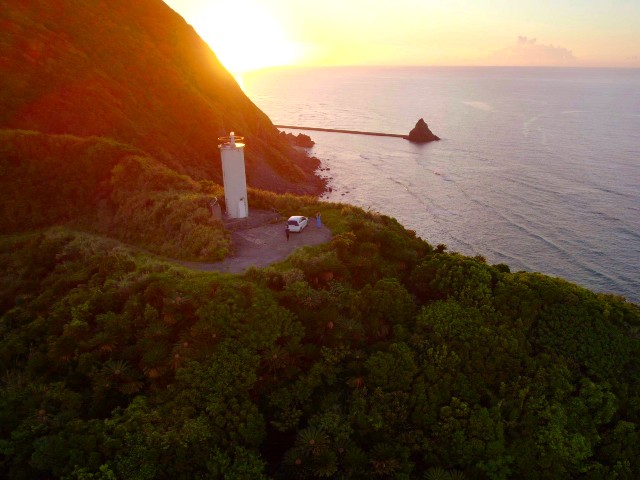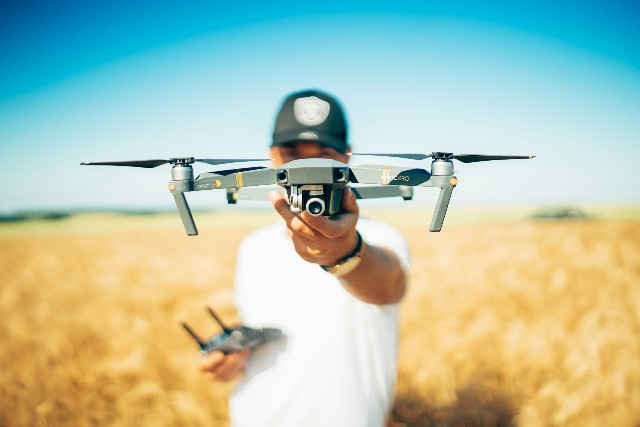
Have you ever thought about taking a drone to capture dynamic photos and videos from the sky when traveling to overseas tourist destinations known for their scenic views? Drones are groundbreaking tools that can turn such dreamy travels into reality, but there are many things you need to know before bringing them abroad. Today, I will explain the preparations and things to be aware of when taking a drone abroad for aerial photography. Whether you’re planning to buy a drone or already familiar with flying drones in Japan, please take a look!
※ This article introduces the procedures generally required when taking a drone abroad. Since the rules vary depending on the country of destination, please be sure to check the local laws yourself and proceed with the appropriate procedures.
Bringing a Drone Without Permission Can Lead to Police Involvement in the Worst Case
I apologize for starting with a serious topic, but it’s essential to understand that flying a drone without permission is generally illegal in any country. This is because drone flights involve many risks, such as accidents or collisions with aircraft. Therefore, it is necessary to obtain permission from the local government before flying. In some countries, attempting to bring a drone without permission can lead to confiscation at the airport or even more significant problems, such as being questioned or detained by local police. Especially in regions with unstable situations, there have been cases of using drones for bombing or spying, leading to a very strict stance against drones. It’s crucial to be fully aware of this.
Rules and Required Applications Vary by Country

Therefore, when taking a drone abroad, you almost always need to apply for a flight permit from the local government. However, the procedures and rules required vary depending on the laws of each country. In some countries, bringing a drone for personal use is easily permitted, but the process becomes more complicated for commercial purposes. Conversely, in other countries, bringing a drone for personal use may be strictly prohibited, and permits may only be obtained for commercial purposes. Additionally, within the same country, the required procedures may vary depending on the size and specifications of the drone, so be sure to check the conditions applicable to your drone.
Basic Process of Drone Flight Application

As mentioned earlier, the detailed regulations vary by country, but let’s look at the general process of the application that is common in most countries. The general steps for applying for permission to fly a drone are as follows:
- Create a Drone Flight Plan
- Create a Flight Permit Application
- Attach Required Documents
- Pay the Application Fee
- Obtain Permission
Let’s take a closer look at each step.
1. Create a Drone Flight Plan
Before applying, you need to create a drone flight plan. It’s a common misconception to think that you can figure out the specific flight location after obtaining permission. In most cases, you are required to provide a clear flight location when applying for permission. The flight plan should include specific details such as the names of cities or municipalities and latitude-longitude coordinates (in seconds). Rough and ambiguous answers like “somewhere around here” won’t suffice. Even if you enjoy spontaneous travel, bringing a drone changes the situation. Plan ahead, coordinate with travel companions or local guides, and decide when and where you will fly the drone.
2. Create a Flight Permit Application
Once the plan is finalized, you need to create a flight permit application. The submission destination varies by country, ranging from submission to the aviation bureau to submission to the military or both. In most cases, you can download the application form from the agency’s website, fill in the required information, and submit a PDF file by email. The information you are required to provide includes:
- Operator information
- Drone specifications
- Planned date and time of flight
- Planned location of flight
- Maximum altitude and maximum flight distance
- Consent form
3. Attach Required Documents
Once you have completed the application, gather the necessary supporting documents. Although the specific requirements vary by country, the following documents are commonly required:
- Copy of passport
- Drone specifications
- Drone user manual
- Photos of the drone
- Flight plan map
- Letter from a local sponsor company (for commercial purposes)
- Registration certificate of the local sponsor company (for commercial purposes)
- Drone proficiency certificate (for commercial purposes)
4. Pay the Application Fee
Once submissions for steps 2 and 3 are complete and have passed the review, proceed to pay the application fee. In practice, some countries issue permits without requiring a fee, or you may receive permission via email. However, in some countries, an application fee may be required, so check the laws of your travel destination in advance.
5. Obtain Permission
If all steps proceed without issues, you are done. Print the permit if issued and bring it with you. Especially on the day of the flight, carry it with you so that you can quickly present it if needed.
Note: Applying for Permits Abroad Takes Longer Than Expected
Having gone through the application process, here’s an important point to note. When applying for drone flight permits from foreign governments, it often takes several months, if not longer, to obtain approval. For those accustomed to flying drones in Japan, this may be surprising, as foreign governments are not as responsive as Japan’s Ministry of Land, Infrastructure, Transport, and Tourism. Even if you see a “minimum required days” mentioned online, don’t take it at face value. Be prepared for at least a three-month period for the application process.
Tips for Smooth Application Processing
However, anticipating a three-month period does not necessarily guarantee peace of mind. If you submit the application and leave it unattended, you may end up not receiving approval by the time of your trip. To ensure you obtain approval by your travel date, consider the following:
Send Reminder Emails Frequently
The most crucial aspect is sending reminder emails. There is a high chance that the email you sent might not have been delivered due to some issue, overlooked, or forgotten. In some cases, I even send reminder emails daily as the deadline approaches. It’s essential to be persistent; otherwise, your emails may go unnoticed!
Send Emails in the Local Language
If you still don’t receive a response, there’s a possibility that there is no one in the team who can read English. Therefore, try using the local language along with English by utilizing tools like Google Translate. This can significantly increase the chances of getting a response.
Prepare a Cover Letter
Surprisingly, many countries place a high value on etiquette more than Japan. If you submit a blunt form letter along with your documents, they may decide that your submission is not worth reviewing. In many countries, it’s customary to attach a “Cover Letter” when sending business or official documents. Although it may feel troublesome for those unfamiliar with exchanges with foreign countries, consider it a significant courtesy and practice it.
Utilize Phone, Fax, SMS, WhatsApp
If you’ve sent reminder emails multiple times without a response, it’s time to consider contacting them through means other than email. Some governments accept inquiries via phone, fax, SMS, or WhatsApp. Utilize these methods and persistently follow up to get a response.
Knowing When to Give Up Is Essential
If, despite all efforts, there is still no progress, unfortunately, it’s crucial to know when to give up. Even in countries where bringing drones is supposedly allowed, there may be a reluctance to accept drones, leading to a refusal in the review process. If you cling too much to bringing a drone, you may end up feeling disappointed during your trip, unable to fully enjoy it because you couldn’t bring your drone. When it’s time to give up, do so decisively and find alternative ways to enjoy your trip!
How Did You Find It?
We’ve briefly explained the process of bringing a drone abroad. How was it? Was it easier than you thought, or was it challenging? Applying for a drone flight permit requires patience, research skills, and at least a basic level of English proficiency, so if you’re unsure about the time commitment, I recommend giving it a try with some extra flexibility.
In the next article, we will cover points to consider when flying a drone abroad and introduce compact and high-performance drones recommended for travel. If you’re interested, please bookmark this article for future reference!
Next Article




